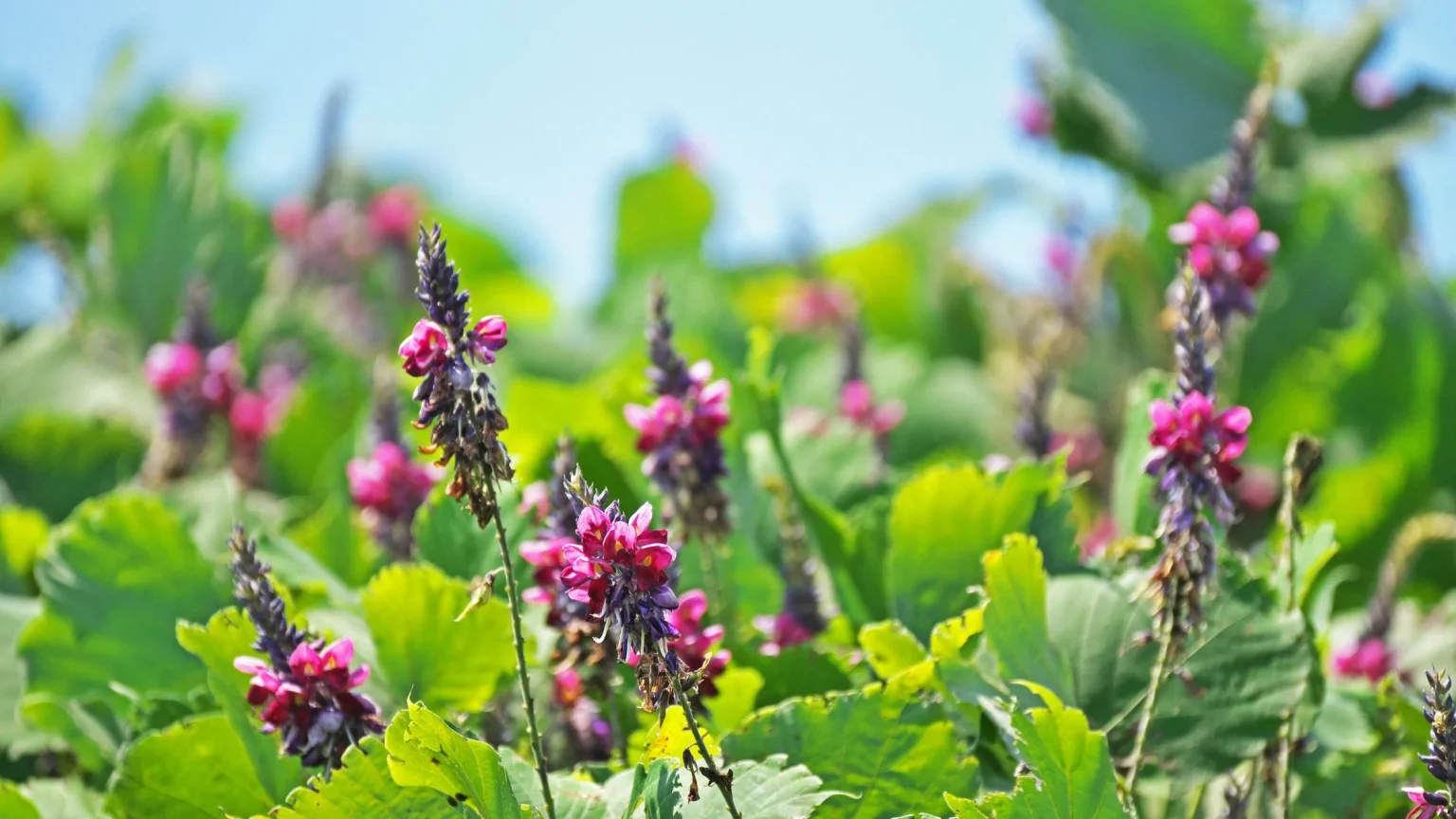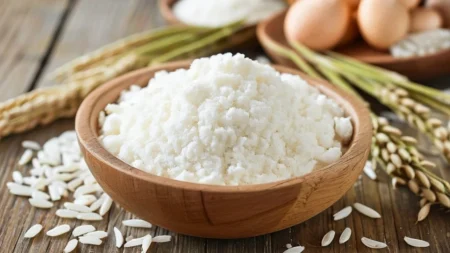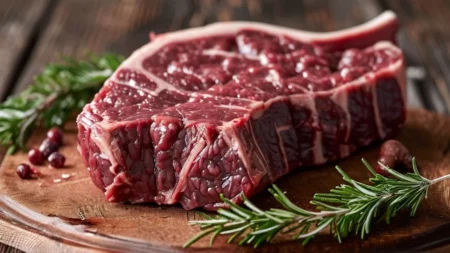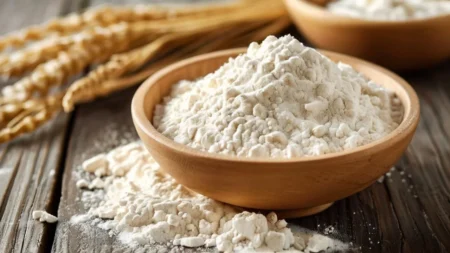Kudzu (Pueraria lobata) is a fast-growing, perennial vine native to Asia. This climbing plant, often referred to as the “vine that ate the South,” has a long history of use in traditional Chinese medicine and as an edible crop. In recent years, kudzu has gained attention for its potential as a biofuel feedstock and fiber source, despite its notorious status as an invasive species in many parts of the world. This article will explore the multifaceted nature of kudzu, delving into its origins, health benefits, culinary uses, environmental impact, and future prospects.
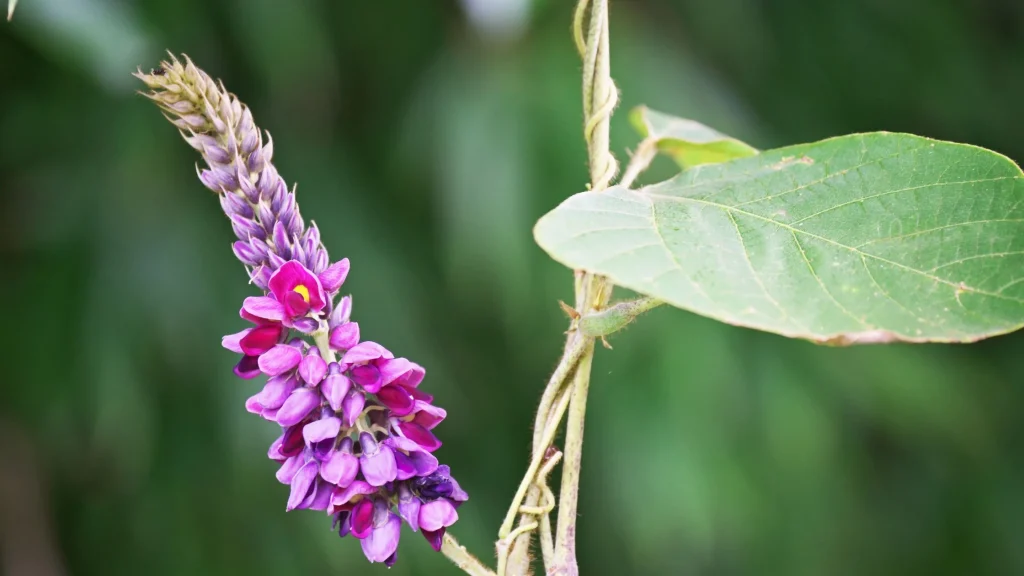
Key Takeaways
- Kudzu (Pueraria lobata) is a fast-growing, perennial vine native to Asia, often referred to as the “vine that ate the South”.
- The plant has a long history of use in traditional Chinese medicine and as an edible crop.
- In recent years, kudzu has gained attention for its potential as a biofuel feedstock and fiber source.
- Kudzu is considered an invasive species in many regions, posing environmental challenges.
- The article will explore the versatility of kudzu, including its origins, health benefits, culinary uses, environmental impact, and future prospects.
Kudzu (Pueraria Lobata): An Introduction
Kudzu, a member of the legume family (Fabaceae), is a vine plant native to parts of Asia, primarily China, Japan, and Korea. This vine plant was first introduced to the United States in the late 19th century, initially as an ornamental and later as a forage crop and erosion control measure. However, kudzu’s remarkable adaptability and rapid growth across a wide range of climates led to its uncontrolled spread, earning it the infamous nickname “the vine that ate the South.”
Origins and Spread
Originating from the Asian origin, kudzu is a perennial vine plant that was brought to the United States for its potential as an asian legume crop and a means of combating soil erosion. Despite its initial agricultural and landscaping applications, kudzu’s invasive species nature allowed it to thrive and proliferate, leading to its rapid and uncontrolled expansion across the southern regions of the country.
Appearance and Characteristics
Kudzu is a distinctive vine plant known for its large, lobed leaves and its ability to climb and cover a wide area. The plant’s vine weed characteristics, including its robust, trailing vines and the production of clusters of purple flowers, contribute to its striking visual presence and its reputation as a challenging invasive species to manage.
Health Benefits of Kudzu
Kudzu, a plant revered in traditional Chinese medicine, has been used for centuries to address a wide range of ailments. The roots, leaves, and flowers of the kudzu plant have all been employed in various traditional remedies.
Traditional Chinese Medicine Uses
The kudzu root, in particular, has been a staple in traditional Chinese medicine. It has been used to alleviate symptoms of alcoholism, as it is believed to help reduce cravings and support the recovery process. Additionally, the root has been used to address cardiovascular concerns, such as high blood pressure and heart disease. Furthermore, kudzu root has been utilized to manage menopausal hot flashes, providing relief for women during this transitional stage of life.
Modern Research Findings
As interest in traditional Chinese medicine has grown globally, researchers have begun to explore the potential health benefits of kudzu. Recent studies have revealed that the plant’s active compounds, such as isoflavones and puerarin, may possess a range of therapeutic properties. These compounds have been investigated for their ability to support cardiovascular health, regulate blood sugar levels, and potentially even have neuroprotective effects. While more research is needed, the growing body of scientific evidence suggests that kudzu could be a valuable addition to the toolbox of natural, plant-based remedies.
Kudzu as an Edible Plant
While kudzu is widely recognized for its medicinal properties in traditional Chinese medicine, the plant also holds value as an edible crop. The large, starchy kudzu roots can be harvested, processed, and incorporated into a variety of culinary dishes. These edible roots have been a staple in the diets of Asian cultures for centuries, highlighting the versatility of this asian legume.
Preparation and Culinary Uses
Kudzu roots can be prepared in numerous ways to create delectable dishes. The roots can be boiled, roasted, or even used to make flour and noodles, allowing them to be seamlessly integrated into traditional Asian cuisine. In addition, the kudzu root can be utilized to thicken stews, stir-fries, and other savory meals, tapping into its natural starch content.
Beyond these traditional preparations, modern chefs and home cooks have also explored innovative ways to incorporate kudzu into their culinary creations. The edible plant can be found in a wide range of dishes, from baked goods to beverages, showcasing its versatility and potential to expand the palates of traditional chinese medicine enthusiasts and health-conscious individuals alike.
Environmental Impact and Control
While kudzu’s rapid growth and adaptability have made it a valuable crop and medicinal plant in parts of Asia, its introduction and spread in the United States have led to significant environmental concerns. Kudzu is considered an invasive species in many regions, as it can outcompete native plants, disrupt ecosystems, and contribute to soil erosion.
Invasive Species Challenges
The vine weed kudzu is known for its ability to quickly cover and smother native vegetation, creating dense, impenetrable thickets that can disrupt the natural balance of ecosystems. As an invasive species, kudzu can displace native plant species, altering the habitat and reducing biodiversity in affected areas. Furthermore, the extensive root system of kudzu can contribute to erosion control issues, destabilizing soil and leading to increased runoff and sedimentation in nearby waterways.
Management and Containment Strategies
Effectively managing and containing the spread of kudzu has proven to be a significant challenge for many regions in the United States. Various kudzu control methods have been explored, including mechanical removal, chemical treatments, and targeted grazing by livestock. However, the plant’s resilience and ability to regrow from even small root fragments have made it difficult to eradicate completely. Ongoing efforts to develop comprehensive vine control strategies, combined with public awareness and community-based initiatives, are crucial in mitigating the environmental impact of this invasive species.
| Kudzu Control Strategies | Advantages | Disadvantages |
|---|---|---|
| Mechanical Removal | Effective for small infestations, can be done manually | Labor-intensive, requires repeated efforts, can stimulate regrowth |
| Chemical Treatments | Effective in controlling large-scale infestations, can provide long-term control | Potential environmental and health concerns, requires specialized application |
| Targeted Grazing | Can be a sustainable, natural control method, can provide additional benefits | Requires coordination with livestock owners, may not be effective in all regions |
Potential Applications and Future Prospects
As the interest in renewable energy and sustainable materials grows, kudzu has gained attention for its potential as a biofuel feedstock and fiber source. The plant’s rapid growth, high biomass production, and starch-rich roots make it a promising candidate for bioenergy applications. Researchers are exploring ways to effectively harvest, process, and convert kudzu into biofuels, such as ethanol.
Biofuel and Fiber Production
The abundance of kudzu biomass and its high carbohydrate content have led to increasing interest in utilizing the plant as a bioenergy crop. Scientists are investigating efficient methods to extract and ferment the starch from kudzu roots, converting it into bioethanol. Additionally, the fibrous nature of kudzu stems and leaves has sparked research into using the plant as a fiber source for various applications, such as textiles, paper, and construction materials.
Erosion Control and Soil Remediation
Despite kudzu’s reputation as an invasive species, its rapid growth and ability to spread can also be harnessed for positive environmental impacts. Kudzu’s extensive root system and dense foliage make it an effective erosion control measure, helping to stabilize soil and prevent soil loss in areas prone to erosion. Furthermore, researchers are exploring the potential of kudzu to aid in soil remediation, as the plant’s ability to fix atmospheric nitrogen and improve soil structure may help to revitalize degraded or contaminated lands.
| Potential Application | Benefits | Challenges |
|---|---|---|
| Biofuel Production | High biomass yield, starch-rich roots, potential for bioethanol production | Efficient extraction and conversion processes, ensuring economic viability |
| Fiber Source | Fibrous stems and leaves, potential for textiles, paper, and construction materials | Developing cost-effective processing and manufacturing techniques |
| Erosion Control | Extensive root system, dense foliage, effective in stabilizing soil | Controlling the plant’s invasive growth and ensuring long-term sustainability |
| Soil Remediation | Nitrogen fixation, soil structure improvement, potential for revitalizing degraded lands | Managing the plant’s impact on native ecosystems and ensuring environmental safety |
Conclusion
Kudzu (Pueraria lobata) is a remarkable plant that has captured the attention of various industries and researchers worldwide. Its versatility, from traditional medicinal uses to its potential as a biofuel and fiber source, highlights the importance of understanding and leveraging the diverse properties of this asian plant. While kudzu’s invasive species nature poses significant environmental impact challenges, its multifaceted applications suggest that with careful management and research, this “vine that ate the South” could become a valuable resource for the future.
As the understanding of kudzu’s benefits and risks continues to evolve, the plant’s role in the realms of health, industry, and environmental sustainability is likely to become increasingly relevant. The kudzu root, edible roots, and potential for bioenergy crop and fiber source production further underscore the versatility of this asian legume and its significance in addressing various global challenges, from erosion control to the pursuit of renewable biofuel potential.
The journey of kudzu, from its asian origin as a vine plant within the legume family to its current status as a widely recognized, yet often vine weed and kudzu control concern, highlights the complex and multifaceted nature of this remarkable plant. As researchers and stakeholders continue to explore the nuances of kudzu, its future role in shaping our collective environmental, economic, and health-related landscapes remains a captivating and evolving narrative.
FAQ
What is kudzu (Pueraria lobata)?
Kudzu is a fast-growing, perennial vine native to Asia that is often referred to as the “vine that ate the South.” It is a member of the legume family (Fabaceae) and was introduced to the United States in the late 19th century as an ornamental and forage crop.
What are the origins and characteristics of kudzu?
Kudzu is native to parts of Asia, primarily China, Japan, and Korea. The plant has a rapid growth rate and can adapt to a wide range of climates, leading to its uncontrolled spread and earning it the status of an invasive species in many regions.
How has kudzu been used in traditional Chinese medicine?
Kudzu has a long history of use in traditional Chinese medicine, where the plant’s roots, leaves, and flowers have been employed to treat a variety of ailments, including symptoms of alcoholism, cardiovascular diseases, and menopausal hot flashes.
Can kudzu be used as an edible plant?
Yes, in addition to its medicinal uses, kudzu has also been valued as a source of food. The plant’s large, starchy roots can be harvested, processed, and consumed in a variety of ways, such as boiled, roasted, or used to make flour, noodles, and other traditional Asian dishes.
What are the environmental concerns associated with kudzu?
Kudzu is considered an invasive species in many regions, as it can outcompete native plants, disrupt ecosystems, and contribute to soil erosion. Its rapid growth and adaptability have led to significant environmental challenges in areas where it has been introduced.
What are the potential applications and future prospects of kudzu?
As interest in renewable energy and sustainable materials grows, kudzu has gained attention for its potential as a biofuel feedstock and fiber source. Researchers are exploring ways to effectively harvest, process, and convert kudzu into biofuels, such as ethanol. Additionally, the plant’s rapid growth and high biomass production make it a promising candidate for erosion control and soil remediation.





